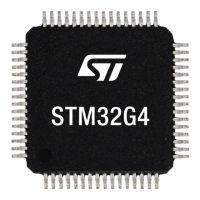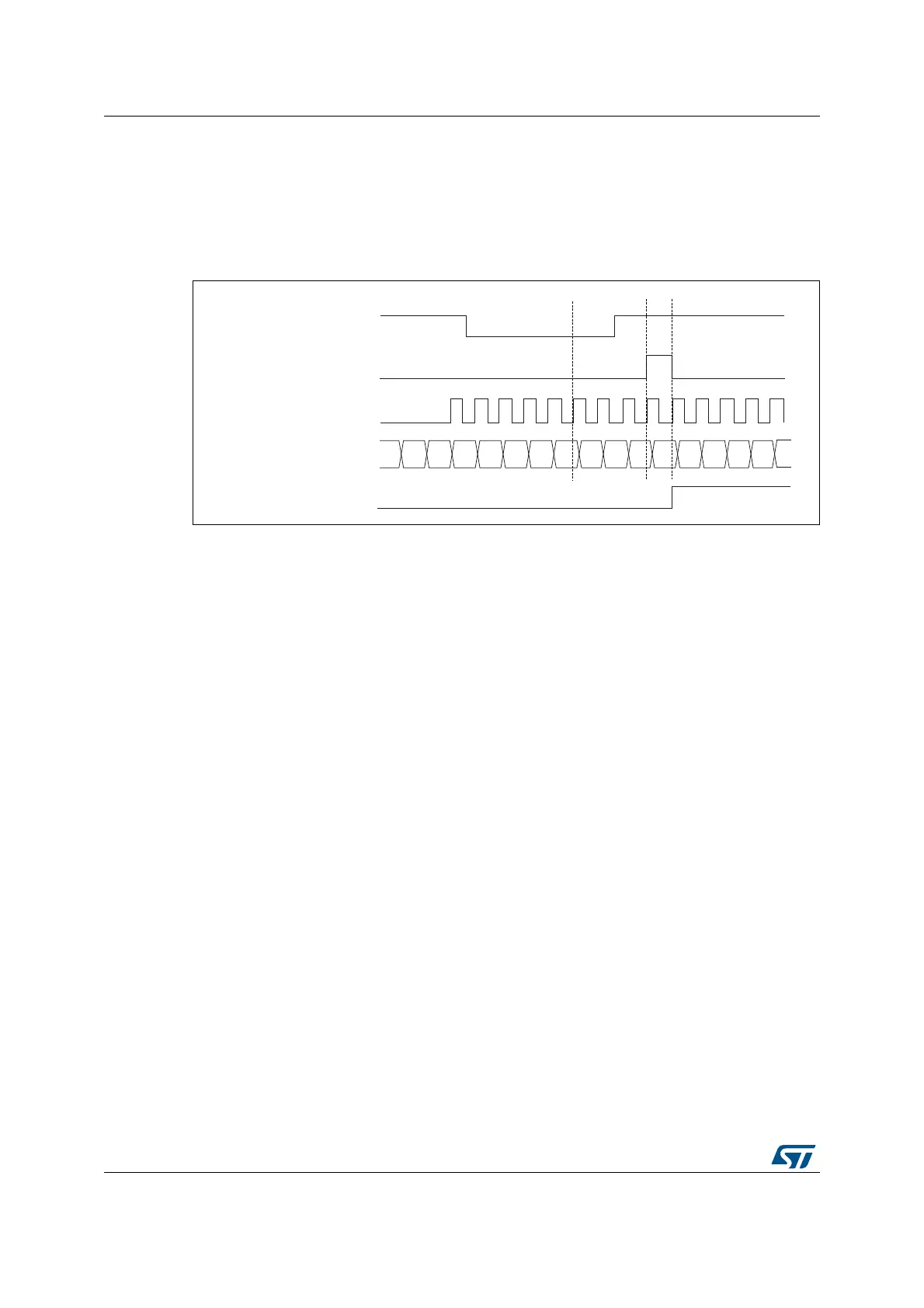General-purpose timers (TIM2/TIM3/TIM4/TIM5) RM0440
1294/2126 RM0440 Rev 4
trigger flag is set (TIF bit in the TIMx_SR register) and an interrupt request, or a DMA
request can be sent if enabled (depending on the TIE and TDE bits in TIMx_DIER register).
The following figure shows this behavior when the auto-reload register TIMx_ARR=0x36.
The delay between the rising edge on tim_ti1 and the actual reset of the counter is due to
the resynchronization circuit on tim_ti1 input.
Figure 428. Control circuit in reset mode
Slave mode: Gated mode
The counter can be enabled depending on the level of a selected input.
In the following example, the upcounter counts only when tim_ti1 input is low:
1. Configure the channel 1 to detect low levels on tim_ti1. Configure the input filter
duration (in this example, we do not need any filter, so we keep IC1F=0000). The
capture prescaler is not used for triggering, so it does not need to be configured. The
CC1S bits select the input capture source only, CC1S=01 in TIMx_CCMR1 register.
Write CC1P=1 and CC1NP=0 in TIMx_CCER register to validate the polarity (and
detect low level only).
2. Configure the timer in gated mode by writing SMS=101 in TIMx_SMCR register. Select
tim_ti1 as the input source by writing TS=00101 in TIMx_SMCR register.
3. Enable the counter by writing CEN=1 in the TIMx_CR1 register (in gated mode, the
counter doesn’t start if CEN=0, whatever is the trigger input level).
The counter starts counting on the internal clock as long as tim_ti1 is low and stops as soon
as tim_ti1 becomes high. The TIF flag in the TIMx_SR register is set both when the counter
starts or stops.
The delay between the rising edge on tim_ti1 and the actual stop of the counter is due to the
resynchronization circuit on tim_ti1 input.
MSv62361V1
00
tim_cnt_ck, tim_psc_ck
Counter register
01 02 03 00 01 02 0332 33 34 35 36
UG
tim_ti1
3130
TIF

